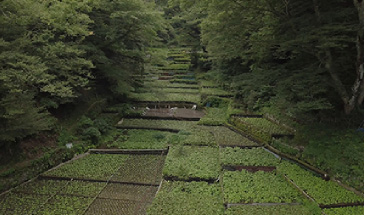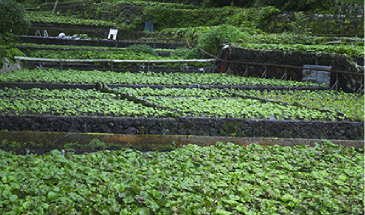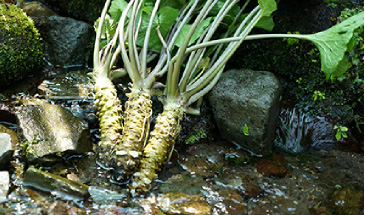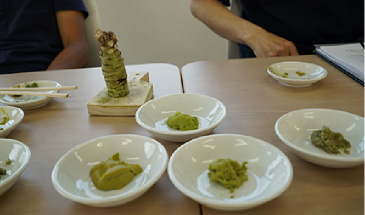Entertainment
News bites
Interesting facts discovered during our delicious and fun adventures.
Wasabi Trivia

The variety of wasabi we reported on in this video, the Mazuma wasabi, takes about 20 to 24 months to harvest. It is harvested throughout the year by planting and nurturing the next seedlings in the paddy field as soon as the harvest is finished. Flavor and pungency differ between summer and winter. If you observe from a distance, you will clearly see that that there are paddy fields with young plants, and those with more mature plants.

As you will see in the video, the wasabi valleys we visited in central Izu, known as "Ikadaba" and "Jizoudou", are cultivated according to the ‘tatami ishi shiki’ style. In the ‘tatami ishi shiki’ style, gravel is placed on top of large stones, and a layer of fine sand goes on top of the gravel, so that the spring water, which flows over this, penetrates not only the surface layer, but also to the deepest part, keeping the water temperature constant - cool in the summer and warm in the winter. Once every 15 years, the soil is softened by taking the soil from the bottom and plowing it back into the top layer. This is called "Tatamigaeshi"(turn-over).

In this wasabi valley, the wasabi is grown using ONLY underground water flowing from the Mt Amagi river system, and not using water channelled from the nearby river. If you drink this underground water, you will find it mellow and delicious. The growers are cultivating the plants in harmony with the natural environment, without using chemical fertilizers or pesticides!

The grading of processed wasabi varies according to the raw materials and the processing technology. Achieving that easily recognised pungent kick depends on the ratio of spiciness combined with what has been extracted. If you use a good quality Japanese fresh wasabi, the resulting product delivers a more complex flavor. At Banjo Foods, we develop various wasabi products according to the season, and the needs of the customers.